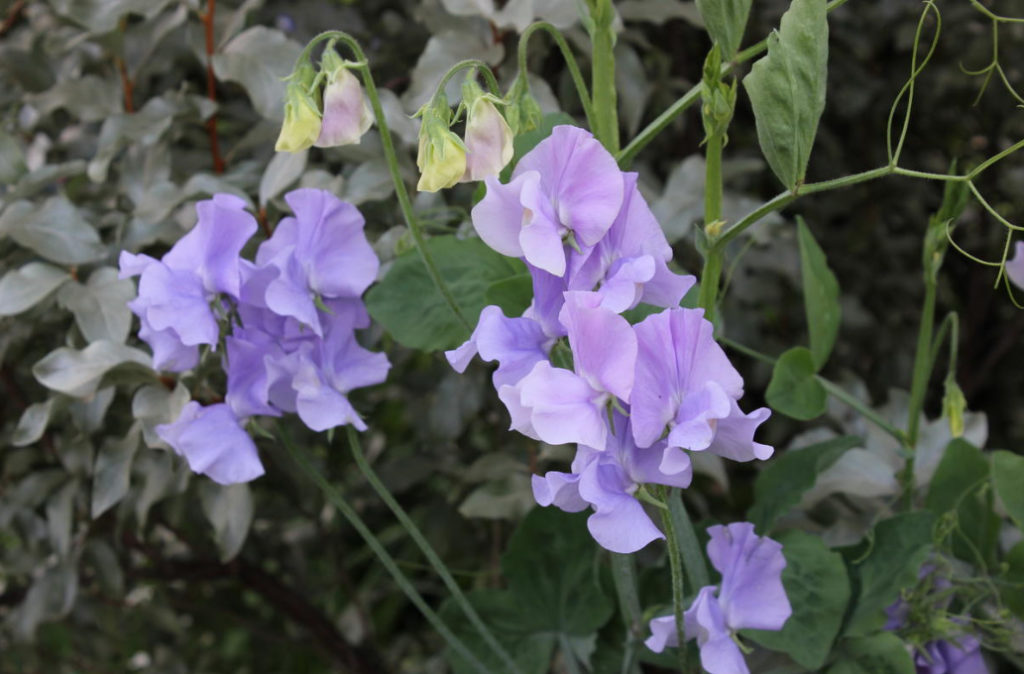Sweet peas are charming and, at first glance, completely unnecessary garden plants. It is impossible to grow them without supports, it is difficult to attach them to the composition, but it is impossible to do without them, so dear to the heart, in any way.
In culture, peas are simple and require little – just a warm sunny location and fertile, loose, non-acidic soil. It would seem that everything is simple: sow and enjoy their diversity and aroma all summer. Unfortunately, disappointments cannot be avoided – beautiful pictures on packages with seeds turn out to be fiction, and often instead of the desired large corrugated flowers you get something similar to fruit peas. This statement, unfortunately, is not unfounded and is confirmed by my many years of experience in collecting a collection of varieties of sweet peas.
Quality seeds: where to get them?
I purchase up to 10 new varieties of peas every year, but only 1-2 samples, and then at best, turn out to be appropriate to the variety and fully germinating. Everyone else is trash.
It is for this reason that I insist that the seeds of sweet peas should be obtained by yourself, which is quite realistic: the spatial isolation for obtaining pure–grade material for these plants is small and limited to a distance of 3-5 m, and the germination retention period when stored in a household refrigerator is significant – at least 3-5 years.
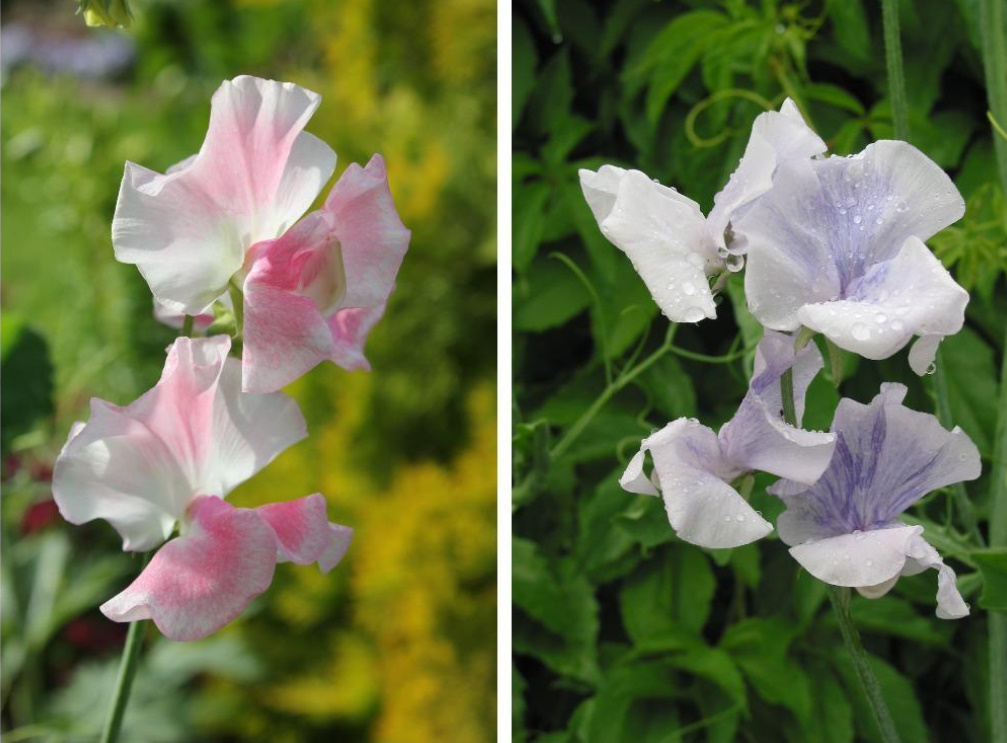
Sweet peas ‘Anniversary’ (left) and ‘Madame Butterfly’ (right)
However, there is a small problem here too: as a rule, the most luxurious varieties tie seeds very poorly or do not want to do it at all. I have developed a barbaric, but trouble-free method of obtaining seeds: I plant plants not in the ground, but in large containers, which I put in the hottest and driest places of the garden. Such spartan conditions do not allow plants to grow freely and bloom luxuriously, but force them to form seeds for procreation.
How to choose varieties
The choice of varieties is a matter of taste, but, as I understand it, most gardeners like large–flowered and profusely flowering. The most famous variety group is ‘Spencer’, created in England at the end of the XIX century. These are tall plants with inflorescences on long peduncles of 4-5 flowers of a wide variety of colors.
One of the features of the varieties of this group is a wide wavy “sail”. Unfortunately, most of the seed samples sold under the noble name ‘Spencer’ produce small flowers with a simple “sail”, i.e. they are an obvious forgery.

Sweet peas ‘Evelin’ (left) and ‘Striped Dark Unwins’ (right)
The varieties of the groups ‘Multiflora Gigantea’ and ‘Galaxy’, created in the USA in the 60s of the last century, are very good. Representatives of these groups have very long peduncles bearing up to 5-6 very large flowers.
There are also dwarfs among the sweet peas used for mixborder and border planting – these are representatives of the ‘Knee-Hi’ and ‘Cupid’ variety groups. However, it is pointless to list the advantages of varieties of peas – it is almost impossible to find elite material. One piece of advice – act at random – buy everything you like and make selections of the best yourself.
Growing sweet peas by seedling method
It is not difficult to grow pea seedlings. If you have a lot of seeds and they are not a pity, you can wet them in early May for 1-2 days and plant them in the open ground. If the seeds are elite and few in number, then you will have to tinker with the seedlings.
It is unwise to germinate seeds in a cool climate earlier than the end of March or the beginning of April: if there is a lack of lighting, they will stretch excessively. However, not everything is so sad – the seedlings of peas are cold-tolerant enough to be able to endure even short-term frosts up to -5 degrees, which allows it to be kept in a cold greenhouse from early spring.
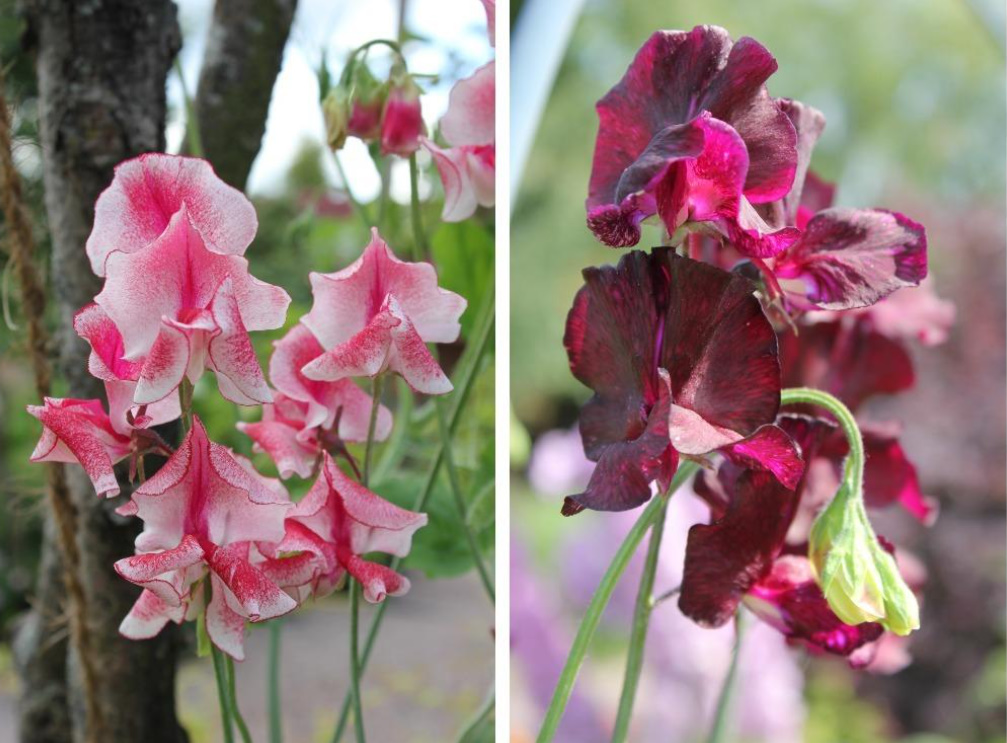
Sweet peas ‘Mars’ (left) and ‘Midnight’ (right)
But perhaps I got ahead of myself too much – first we should talk about the correct method of germination of seeds, which deceptively seems simple, although in fact it is a considerable problem. The fact is that the large seeds of sweet peas are covered with rather dense, moisture-proof covers, which is favorable for long storage, but prevents germination.
If you look closely, you will probably notice that some of the seeds have broken covers, which is why they are able to swell at the first contact with moisture. If such seeds are fresh and stored in the cold, it is very gratifying – they will germinate quickly and amicably. If they have been stored for more than two years, then it is no longer necessary to talk about the germination of such.
Unfortunately, seeds are kept warm in stores, and the shelf life indicated on the packages most often turns out to be an obvious fake. I will share my experience with sweet pea seeds.
Soaking and germination of seeds
1. At the end of March – beginning of April, place the seeds in rag bags, putting a label corresponding to the variety in each of them.
2. Put the bags of seeds in a container with warm water and keep it warm for 4-5 hours. The use of a thermos for this purpose is undesirable, since constant washing is necessary, which is impossible in a closed vessel.
3. Inspect the seeds, discard the damaged ones and select those that did not want to swell and remained strong. Such seeds should be scarified, i.e. their dense covers should be slightly disturbed. The easiest way to do this is with sandpaper. However, this operation (light wiping of dry seeds between two layers of sandpaper) can be carried out before soaking.
4. Repeat the operation of soaking, or rather, washing the seeds.
5. After all the seeds have swelled, squeeze out excess water from the bags, put them in a plastic bag and put them in a warm place.
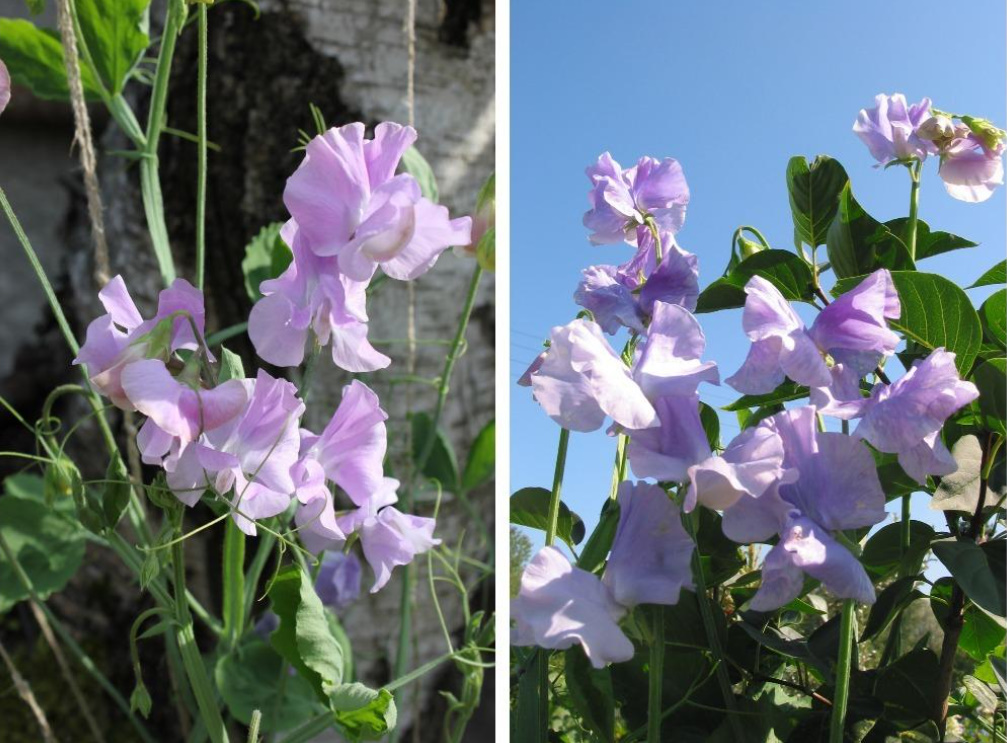
Sweet peas ‘Laemingthon’ (left) and ‘Blue Monthly’ (right)
Look through the seeds every day, discard the rotten ones and rinse the remaining ones in running water. With fresh high-quality seeds, such a hassle is not needed, but it is not possible to germinate “store-bought” otherwise.
Seedlings may appear after 2-3 days, but weakened seeds germinate for a long time, up to 10 days. If no seedlings have appeared during this period, then there is nothing more to wait for, even if the seeds are intact and strong.
Planting of germinated seeds and seedling care
The germinated seeds are planted in fertile loose soil in pots with a diameter of about 5 cm or in standard high plastic cups, which are very good in their proportions. A drainage hole in the bottom and a drainage layer are necessary! Bury the seeds slightly, no more than 1 cm, making sure that the root is on the bottom or side. 2-3 seedlings can be placed in each cup. Seeds germinate at a temperature of +20…+23 degrees.
Seedlings should be kept in a cool, bright room. Watering is very moderate, as the soil dries out. Peas grow very quickly, which is why they soon begin to stretch and lie down even in strong light. Make a pinch over 3-5 sheets! This is important not so much to preserve the compactness of seedlings, but to provoke the appearance of side shoots, on which, in fact, your peas will bloom.
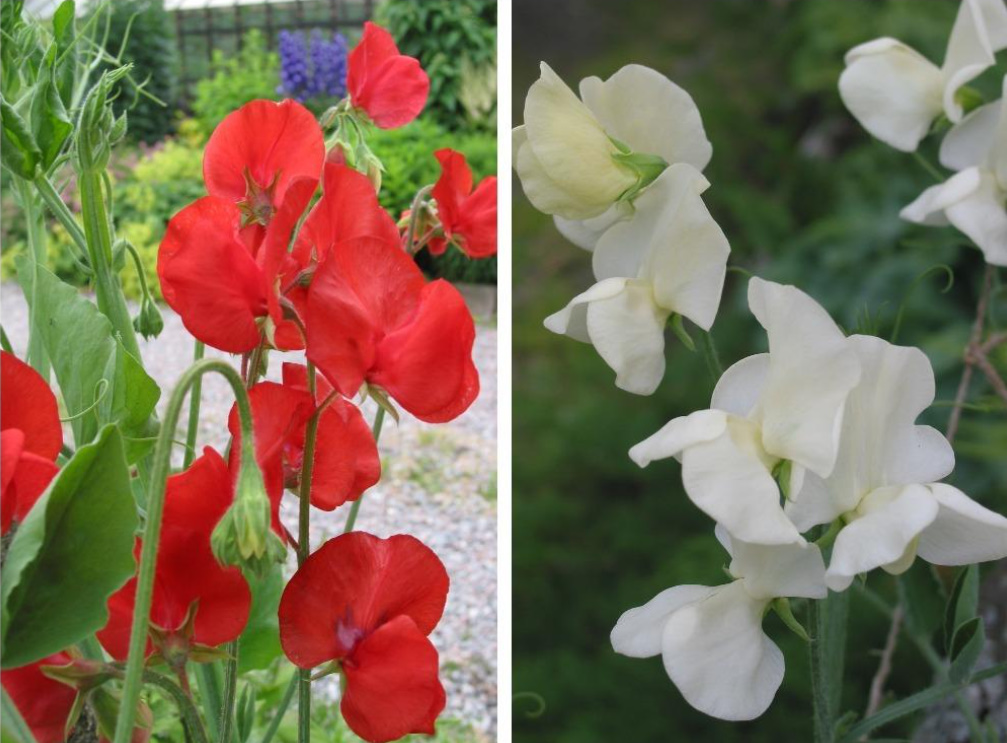
Sweet peas ‘Scarlet’ (left) and ‘White Swirl’ (right)
From the first warm days, take the seedlings to the greenhouse and, if possible, begin to accustom them to the air. The peas should be planted in the brightest places in a fertile, loose, preferably non-acidic soil.
Peas climb up the supports with the help of tendrils, but stubborn young plants categorically do not want to do this, preferring to crawl on the ground. Help them and guide them up with a garter. And then, throughout the summer, enjoy the beauty and intoxicating smell, cut peas into bouquets, decorate your house with them and give them to friends!
